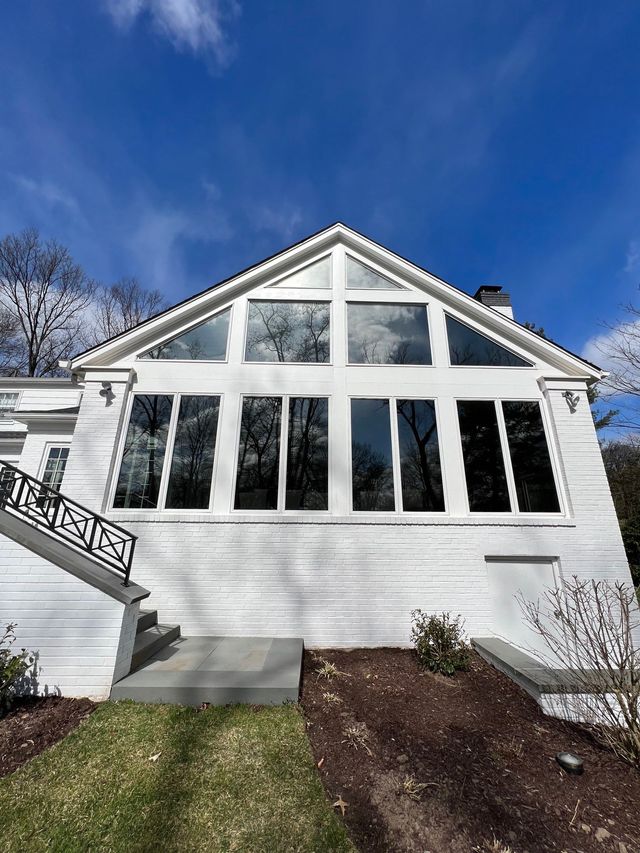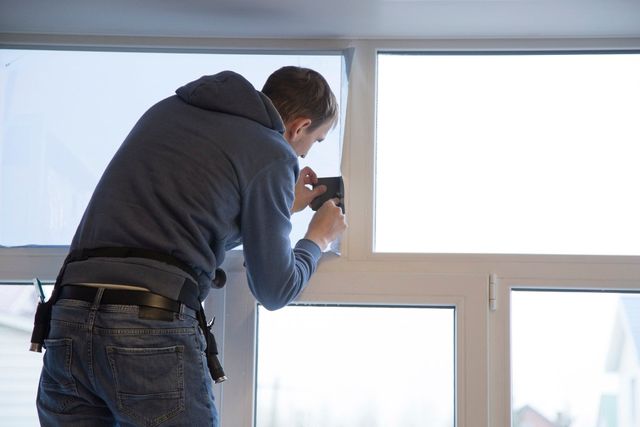Just How Residential Window Tint Can Decrease Energy Costs
Just How Residential Window Tint Can Decrease Energy Costs
Blog Article
Exactly How Residential Window Tinting Enhances Your Home's Power Effectiveness
Residential window tinting offers an engaging remedy for property owners looking for to boost energy effectiveness within their living rooms. By applying specialized films to windows, it successfully decreases heat transfer, thus supporting interior temperature levels and minimizing the need for extreme home heating or air conditioning.
Comprehending Window Tinting
Recognizing window tinting is vital for home owners seeking to boost both comfort and energy effectiveness in their living rooms. Residential Window Tint. Home window tinting includes the application of a thin movie to the inside or exterior surface of glass windows. This movie can substantially regulate the amount of sunlight and warm that enters a home, hence affecting interior environment problems
There are various types of home window tinting films offered, each with distinctive homes. As an example, dyed movies soak up solar power, while reflective films disperse it away from the glass surface area. Ceramic films provide an equilibrium of exposure and warm rejection, making them a popular selection among home owners. The effectiveness of window tinting is frequently gauged by its Visible Light Transmission (VLT) percentage, which suggests just how much light can go through the movie.
Advantages of Energy Performance
Window tinting not only improves aesthetics but likewise plays a substantial role in enhancing energy efficiency within property rooms. By reducing warmth transfer through home windows, tinted movies develop a more secure interior climate, which can bring about significant decreases in energy usage for home heating and cooling. This power effectiveness converts right into reduced energy costs, giving property owners with considerable lasting savings.

Furthermore, home window tinting boosts the comfort of living areas. By minimizing glare and obstructing harmful UV rays, tinted windows create an even more pleasurable atmosphere, which can result in enhanced wellness for passengers. The security versus UV rays likewise helps preserve furnishings and floor covering from fading, adding to the longevity of household things.
How Tinting Works
Tinting films operate through a mix of innovative materials and modern technologies made to manage the quantity of solar energy getting in a home. Largely composed of polyester, these films typically include ceramic or metal bits that show and absorb warm. This double ability permits them to considerably lower the infiltration of ultraviolet (UV) rays and infrared radiation while permitting visible light to go through.
The effectiveness of window tinting is determined by its solar warmth gain coefficient (SHGC), which shows just how much solar power is sent via the home window. Lower SHGC worths are more suitable as they signify better warm rejection. Additionally, window colors can include a variety of tones, enabling homeowners to tailor their aesthetic preferences while enhancing energy performance.
In addition, these films act as an obstacle, protecting against warmth loss during colder months by showing indoor heat back right into the home. This thermal insulation effect matches the air conditioning benefits gotten throughout warmer months, adding to a balanced interior environment year-round. By taking care of solar energy successfully, domestic home window tinting not just boosts comfort however likewise plays a crucial function in minimizing energy intake and lowering utility costs.
Picking the Right Color

There are various types of window films offered, including colored, metalized, and ceramic. Ceramic movies provide outstanding warm control without endangering exposure and are extremely long lasting, making them a preferred selection.
Noticeable light transmission (VLT) is another important aspect, as it shows the quantity of all-natural light that can pass through the tinted glass. Property owners need to pick a color with a VLT that complements their lighting choices while still providing adequate glare reduction.
Additionally, evaluating the solar warm gain coefficient (SHGC) can assist identify exactly how well a color can block heat from sunlight. A reduced SHGC shows much better heat control, ultimately enhancing energy effectiveness.
Installment and Upkeep Tips
Appropriate installation and upkeep are essential parts in maximizing the advantages of property window tinting. To attain ideal results, it is a good idea to hire a certified expert for installation. This makes certain that the color is applied correctly, staying clear of air bubbles, wrinkles, or imbalance that might compromise efficiency. Experts also make use of specialized tools and techniques, which can improve the longevity and effectiveness of the color.
Complying with installment, upkeep is important to lengthen the life of the home window movie. It is recommended to wait at least 30 days before cleaning up the tinted windows to enable the glue to heal fully.
Resolving these concerns immediately can stop more damage and maintain power performance. By adhering to these installment and upkeep tips, home owners can guarantee their window tinting continues to offer considerable energy financial savings and convenience for years to come.
Final Thought
To conclude, household home window tinting works as an effective remedy for improving energy efficiency within homes. By decreasing heat transfer and obstructing unsafe UV rays, window films add to decrease energy usage and improved interior comfort. The option of suitable tinting materials, in addition to appropriate installation and upkeep, even more optimizes these benefits. Ultimately, home window tinting represents a lasting investment that not just lowers utility costs however additionally promotes a comfy living atmosphere throughout the year.
Home window tinting entails the application of a slim movie to the interior or exterior surface area of glass windows. By minimizing warmth transfer with windows, tinted films click for source develop a more stable indoor environment, which can lead to significant reductions in power intake for home heating and cooling.The effectiveness of window tinting is determined by its solar warmth gain coefficient (SHGC), which shows how much solar energy is transferred with the window. By taking care of solar energy properly, household window tinting not only improves comfort however additionally plays a vital function in decreasing power intake and reducing utility bills.
By reducing heat transfer and blocking damaging UV rays, home window movies contribute to reduce power intake and boosted interior convenience.
Report this page